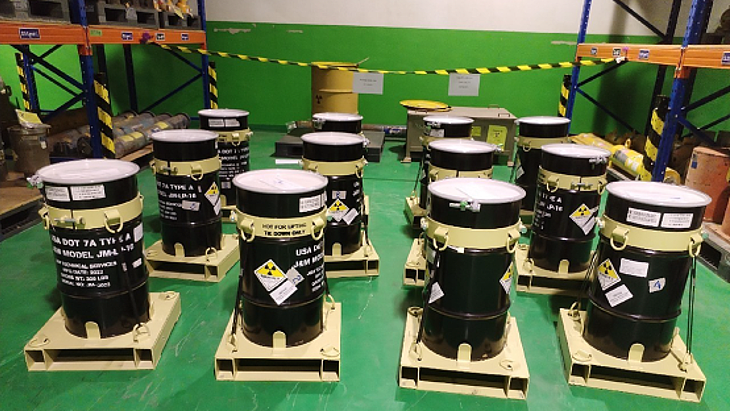Canada to turn radioactive sources from Thailand into cancer treatments
Canadian Nuclear Laboratories (CNL) has received shipments of disused radium-226 sources from the Thailand Institute of Nuclear Technology, which will be recycled to produce actinium-225 to be used in targeted radiotherapy.

The benefits of the scheme are called 'monumental' (Image: Archara Phattanasub/TINT/IAEA)
The arrangement is part of the International Atomic Energy Agency's (IAEA's) Global Radium-226 Management Initiative, which aims to connect countries who have old radiotherapy sources with other countries interested in recycling or reusing them.
According to the IAEA: "Radium-226, discovered in 1898 by Marie Sklodowska-Curie and Pierre Curie, was formerly used in radiotherapy but has since been replaced by other sources. Today, it serves as a feedstock for the production of the radioisotope actinium-225, which is so rare that annual global production is less than a grain of sand. Actinium-225 is an alpha-emitting source known to be effective in destroying malignant cells in targeted cancer treatments. It allows for targeted radiotherapy as it can be placed close to the tumour and will kill cancerous cells without damaging nearby healthy tissue."
Thailand Institute of Nuclear Technology and CNL have been in contact via the scheme since 2022 and over the past year 70 packages of disused radium-226 have been sent to Canada. The institute's Archara Phattanasub, Head of the Radioactive Waste Technology and Development Section, said: "Recycling these sources has multiple benefits for Thailand and is in line with circular economy objectives. This initiative has helped up significantly reduce the risk for any type of incident associated with these disused sources and freed up a lot of space in our national storage facility."
Jack Craig, President and CEO of CNL, said: "The IAEA has long championed the safe storage and disposal of disused sealed radioactive sources, which has always been appreciated and supported by Canada. However, their initiatives to assist donor nations in removing long-term liabilities while enabling a new radiotherapeutics industry is monumental."
Olena Mykolaichuk, the Director of the IAEA's Division of Nuclear Fuel Cycle and Waste Technology, said the collaboration "serves as a great example of how to effectively conduct complex source transportation operations with many moving parts ... fostering sustainable practices is a key element of the IAEA's mandate, and we look forward to delivering on this initiative for many years to come."
The transport of radioactive material is closely regulated and overseen by national bodies and port authorities, with IAEA support prior to shipment. More transfers are planned for this year, including from El Salvador, Fiji and Slovenia.
Researched and written by World Nuclear News
- China Institute of Atomic Energy
- Nuclear Power Institute of China
- Southwestern Institute of Physics
- China Nuclear Power Operation Technology Corporation, Ltd.
- China Nuclear Power Engineering Co., Ltd.
- China Institute for Radiation Protection
- Beijing Research Institute of Uranium Geology (BRIUG)
- China Institute of Nuclear Industry Strategy (CINIS)
- China Nuclear Mining Science and Technology Corporation


